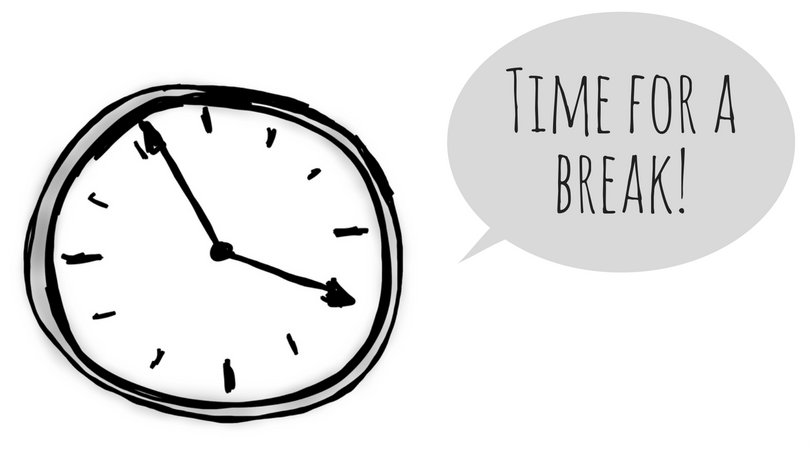Well-timed breaks can work magic. I first experienced this in high school. We had block scheduling, with four 90-minute class periods per day. My physics teacher, Mr. Plate, got it: how long 90 minutes can feel when you’re sitting at your desk and using your brain.
When Mr. Plate noticed our class wilting, he’d stop in the middle of his lesson — sometimes his sentence — and say, “go to the back of the room. We need beanbags.”
Then we’d stand in a circle and play beanbags. The game began with one bag. The first person tossed it across the circle to the second, who tossed it back across to a third, and so on, until everyone had gotten the beanbag and it came back to the start. We continued the tossing pattern, adding more and more beanbags, until we broke down in laughter. Beanbags collided in midair, one person would suddenly find themselves with an armful, etc.
It took less than five minutes to fill the classroom with life. We returned to our seats energized and ready to learn.
Mr. Plate understood his choice: lose us for five minutes while we threw beanbags, or lose us for 45 minutes while he plowed ahead with the presentation he’d planned.

Breaks earn back their costs
Bottom line: smart breaks give back more time than they take. Now that my work happens at home and I structure my own days, I need to recognize my own need for beanbags — or just a break from my computer screen.
I often resist breaks when I’m on a roll, especially with something like sewing, which offers endless small doses of instant gratification. I’ve tried to train my brain to disengage. When I’m writing, I now know I should break after 45 minutes, even if I don’t want to. I’m now more vigilant for that first small dip in productivity — a signal that my brain needs to switch gears. If I ignore it, I unknowingly slip into time-wasting activities.
Breaks can shake off hyperfocus
Breaks also forcibly disengage our hyperfocus. When I push my writing muscles too hard, I slow down, make mistakes, and end up meandering the internet. This doesn’t happen when I’m sewing, but I may regret spending a whole afternoon in the basement when I had more pressing things to do. Hyperfocus clouds our view of what constitutes a good stopping point. We’re often blind to one-more-thing-itis until it’s too late.
If we break away from time to time, it gives us a chance to reevaluate. I’ve had a terrible time prying my husband away from a task, where no amount of “we’re going to be late” or “you promised you’d help me with X today” will budge him. Yet if I can trick him into walking away for five minutes under the pretense that he can come right back to it, it’s like he’s waking up from a trance. He might even say out loud, “I don’t need to work on that right now.” A break frees us to ask ourselves, “is this how I want to spend the next X minutes/hours of my time?”
Breaks don’t always feel good
The adults in our household also struggle with a common ADHD fear: “if I don’t finish this now, when will I ever get back to it?” Also: “I wasted some time today, but I still want to feel proud of my progress.” My husband has told me he’s more likely to stay at work all night if he feels he’s used time unwisely, or if he spends too long helping coworkers with their issues. For my part, I have a bad habit of viewing projects in a strict binary: Done or Not Done. If I’ve spent hours, days, or weeks on a project and it’s still Not Done, then I feel discouraged, like it will never be Done. Sometimes this frustration leads to a backbreaking marathon because I can’t bear to keep looking at Not Done.
These are all legitimate feelings, but pushing ourselves too hard won’t solve the underlying problem. We’d do better to build confidence in our ability to come back to an incomplete project and finish it later. We’d do better to learn to manage our productivity during the day so we feel okay about leaving work before bedtime. We’d do better to learn to see the products of our hard work, even if a project isn’t finished yet.
All of this is hard. ADHD is hard. What I really want, more than anything, is a break from ADHD. Failing that, I’m trying to prioritize giving my brain the breaks it needs to keep going. I’m trying to accept breaks when I need them — to recognize when I need them — and not feel resentful, fearful, or guilty about it. It’s a work in progress. Next week, I’ll share some of my break-taking techniques.
Do you struggle to take breaks when you need them? How do you know when it’s time to change gears?
Hey there! Are you enjoying The ADHD Homestead?
Here's the thing: I don't like ads. I don't want to sell your attention to an advertising service run by the world's biggest data mining company. I also value my integrity and my readers' trust above all, which means I accept very few sponsorships/partnerships.
So I'm asking for your support directly. For the cost of one cup of coffee, you can help keep this site unbiased and ad-free.
Below you will find two buttons. The first lets you join our crew of Patreon pals and pledge monthly support for my work. Patrons also have access to my Audioblogs podcast. The second takes you to a simple donation page to pledge one-time or recurring support for The ADHD Homestead, no frills, no strings. Do whichever feels best for you!

